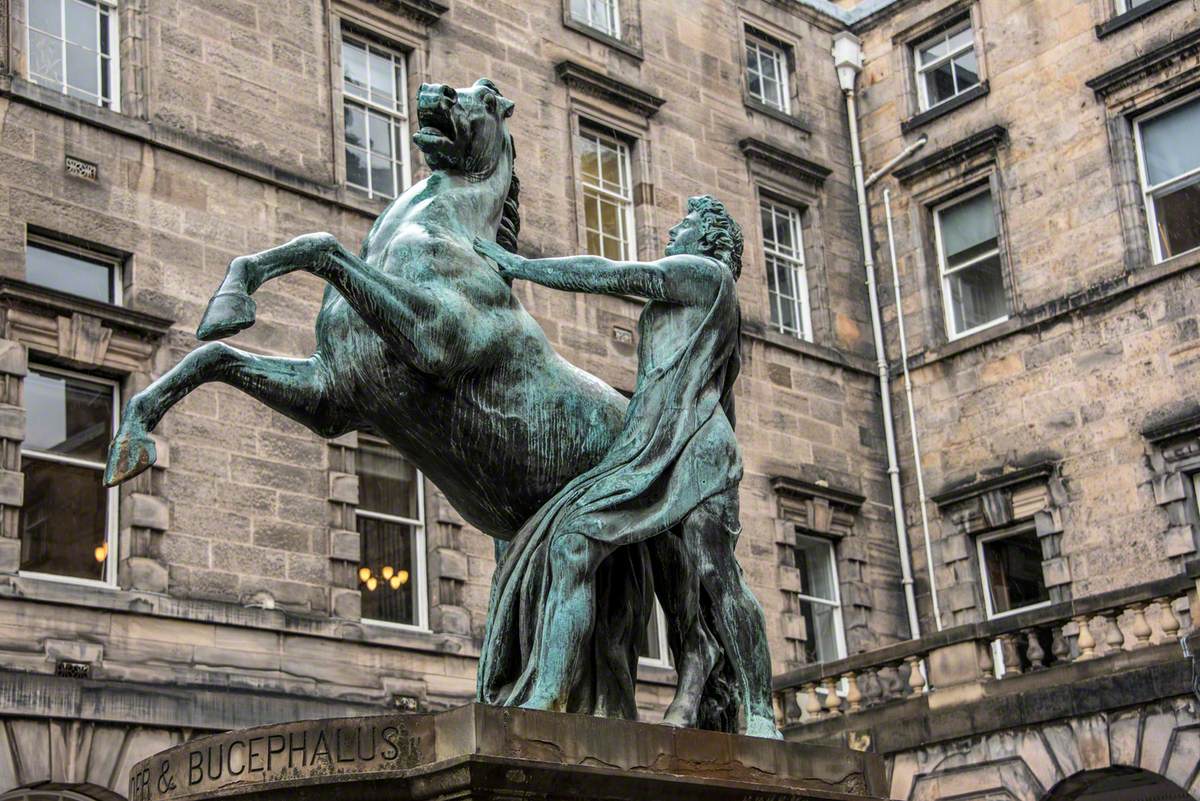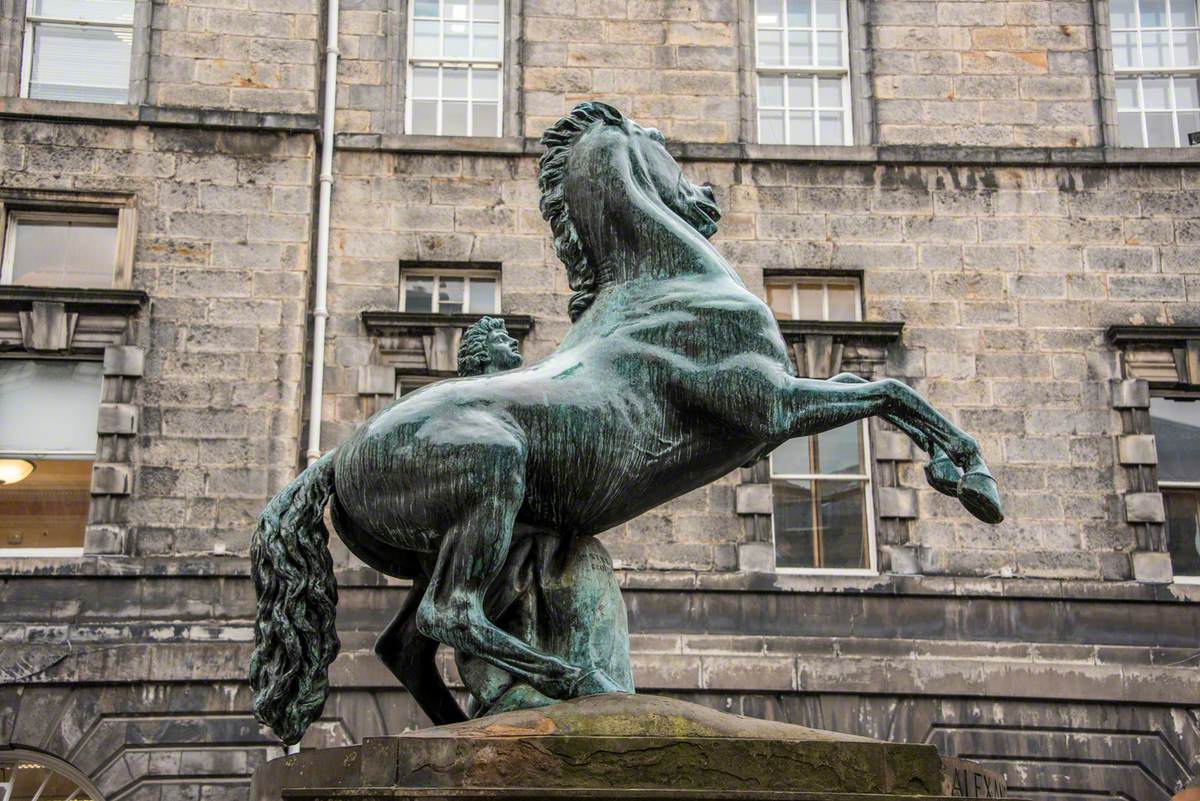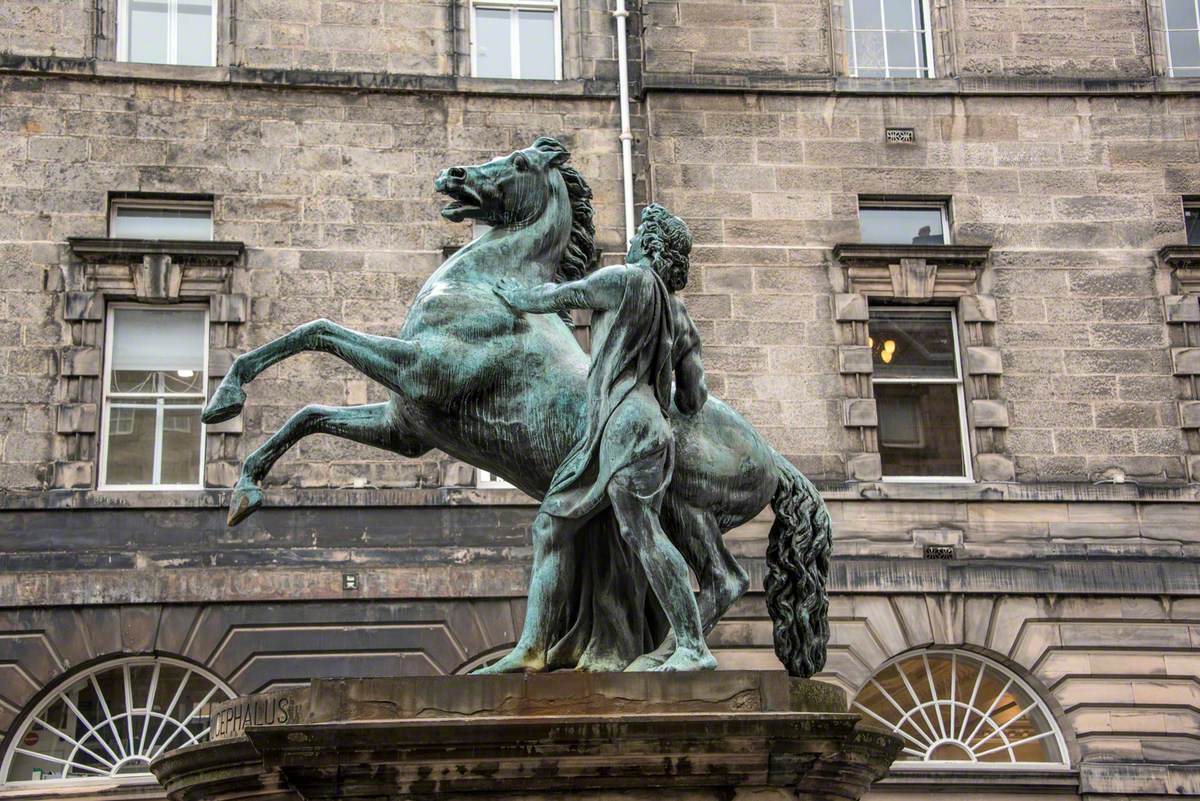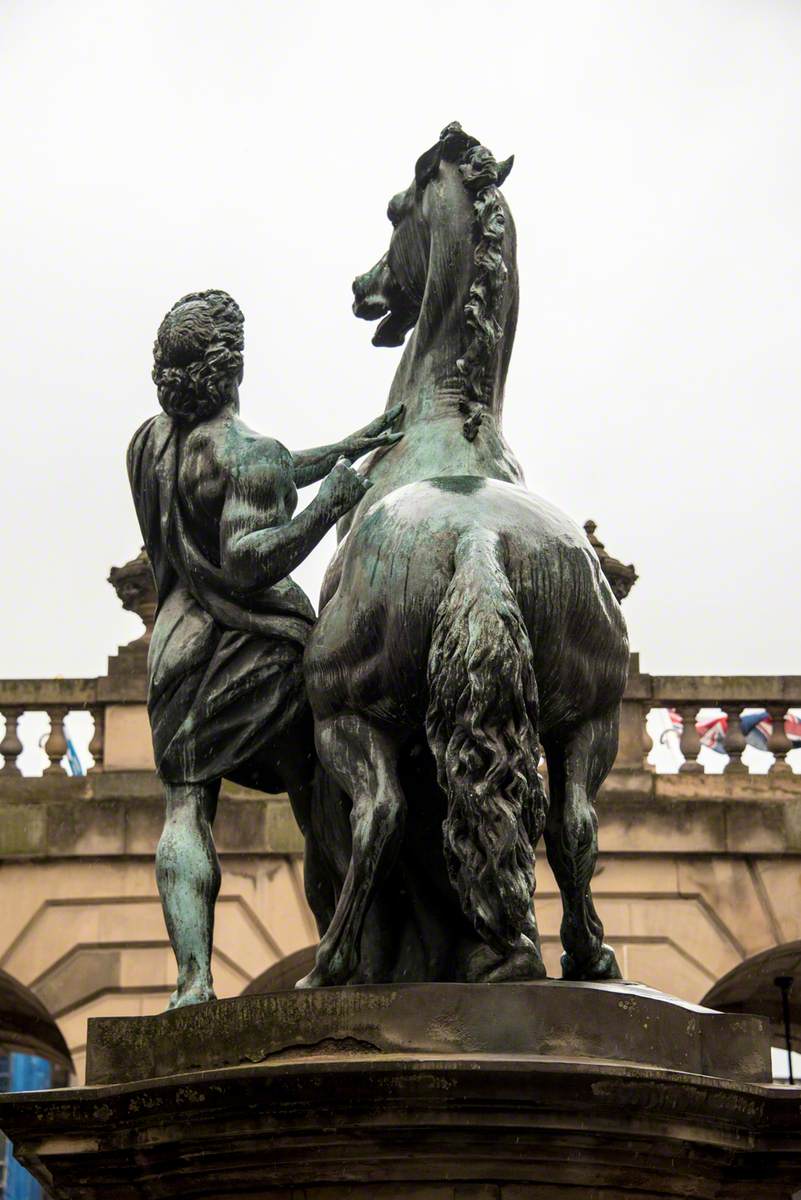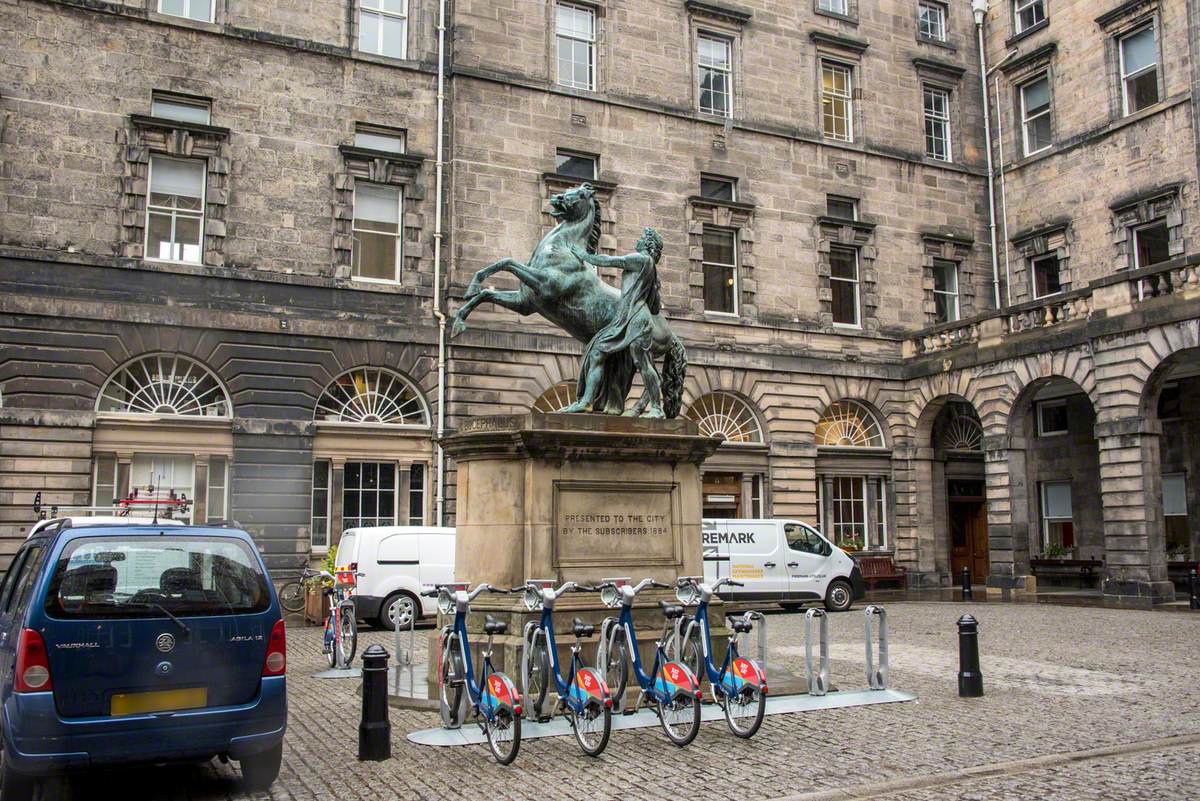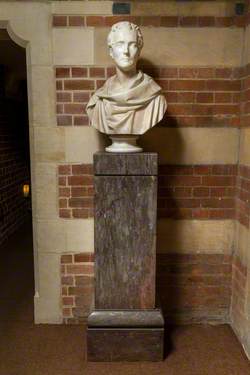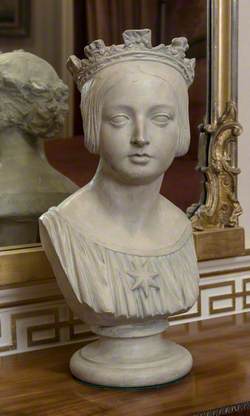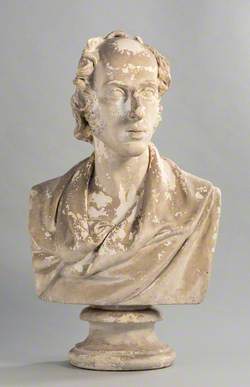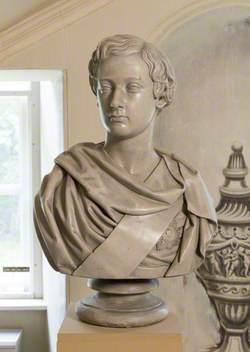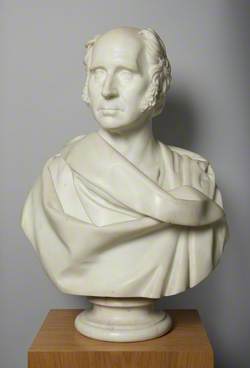How you can use this image
This image is available to be shared and re-used under the terms of the Creative Commons Attribution-NonCommercial licence (CC BY-NC).
This image can be reproduced in any way apart from any commercial uses.
Wherever you reproduce the image or an altered version of it, you must attribute the original creators (acknowledge the original artist(s), the person/organisation that took the photograph of the work) and any other stated rights holders.
Review our guidance pages which explain how you can reuse images, how to credit an image and how to find more images in the public domain or with a Creative Commons licence available.
DownloadNotes
Add or edit a note on this artwork that only you can see. You can find notes again by going to the ‘Notes’ section of your account.
Title
Alexander (356 BC–323 BC) and Bucephalus (c.355 BC–326 BC)
Date
1832–1883
Medium
bronze
Measurements
H 300 x W (?) x D (?) cm;
Plinth: H 340 x W 240 x D 220 cm
Accession number
EH1_GB_S006
Acquisition method
paid for by public subscription
Work type
Equestrian
Owner
City of Edinburgh Council
Custodian
City of Edinburgh Council
Work status
extant
Listing status
A (Scotland)
Unveiling date
18th April 1884
Listing date
14/12/70
Access
at all times
Signature/marks description
incised on drapery below horse’s stomach: JN. STEELL / SCULTPT
Inscription description
edge of the proximal plinth: ALEXANDER & BUCEPHALUS; on the east face of the pedestal: PRESENTED TO THE CITY / BY THE SUBSCRIBERS, 1884.; on the west face of the pedestal: MODELLED, 1832. / CAST IN BRONZE, 1883.
